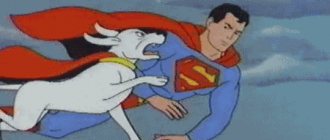Art therapy is a gentle “treatment” using creative methods. With its help, you can tune in to the right mood, calm down, and reduce stress levels. But is it able to effectively work with conditions such as fear and anxiety?
"Yes!" - art therapists answer. And now we will look at pleasant and useful techniques for healing fears with the help of creativity.
What is fear and why is it needed?
Fear
- an internal state caused by a threatening real or perceived disaster. Wikipedia.
The feeling of fear is familiar to everyone. It covers the feeling of happiness
, well-being and limits opportunities (in realization, creativity, in building close relationships).
Because of fear, a person commits actions that he later regrets. Fear-filled behavior is defensive
in nature. Man gradually becomes stupid and degenerates.
A person focuses all his attention on ensuring his own safety and creating means of protection. But this is not effective.
Everyone faces fear. Therefore, it is important to understand how fear works. How it works and why it is really needed.
Fear has an extremely important useful function - it helps to act in life-threatening situations. Fear helps you survive where there is a real threat
life.
Under the influence of fear, a person mobilizes all his strength in three types of rescue reactions: fight, run, freeze. Those. fear helps you act instantly to save your life. This is a lot of stress for the body.
In life-threatening situations, a person understands exactly what he is afraid of, what exactly poses a threat to him. And therefore he understands what needs to be done.
It is important to understand that most fears are not related to real danger and do not threaten human life. But remaining unconscious, they encourage a person to remain in constant tension and stress. And this leads to suspiciousness, anxiety, insomnia, depression and panic attacks. A person lives in a constant struggle with dangers and never feels free.
Therefore, fear must be recognized. When we know exactly what we are afraid of, then we know what to do about it.
Thus, there is rational fear (fear when there is a real threat to life) and irrational (when a person does not understand the meaning of the threat and does not know how to protect himself from it).
Advantages
— Compared to the same psychoanalysis, the EMDR technique is short-term. For example, one fear can be completely and irrevocably removed in 2 hours of work.
- Compared to behavioral techniques (the therapist takes you by the hand, and you go down to the subway together, or approach an elevator, a spider, an airplane, etc.), you do not need to actually encounter objects that cause anxiety, fear - it is enough to imagine them.
— Compared to hypnosis, it is absolutely safe, there is no artificial intervention in the psyche. EMDR is a natural psychophysiological process). This technique can be used with both children and the elderly.
— Compared to almost any direction in psychology, you can use this technique yourself.
— Transparent for the client: in comparison with other areas in psychology, where everything is quite blurry and unclear what exactly will happen to you, in what ways, in what time frame, etc. – everything is transparent and clear here: at the very first meeting, the client receives clear information about how his request will be resolved.
— Helps in solving a huge range of queries: anxiety, fear, panic attacks, somatic disorders, stress, anger, guilt, acute grief, dissociative disorders, PTSD, violence.
How does fear work?
Having understood the mechanism of how fear works, you receive a magic key that opens the door to freedom.
So, it is important to understand:
- You cannot control the feeling of fear. You can pretend it doesn't exist.
- You cannot suppress fear with will. Only external manifestations of fear can be suppressed.
- You can't deny the fear. We can admit that it really exists.
Fear
- an experience associated with a lack of control over emotions and expectations.
Fear is based on a person’s ability to simulate the future. A person creates pictures of the future based on his past experiences. That is, he takes a situation from the past and transfers it to the future.
If this situation involved an unpleasant, painful experience, then the person is afraid of its repetition.
For example, parents scolded a child for getting a bad grade. Transferring this situation into the future, he will be afraid of getting a bad mark. He received a deuce while answering at the board. He will probably be afraid to go to the board. While in class while questioning students. he will be constantly stressed. This will lead to poor performance. And there will be more twos in the diary. A deep fear of punishment will lead to more punishment.
There are two moments in the formation of fear:
- Having a traumatic experience in the past. Without experience, fear will not arise. Moreover, this experience can be either lived personally or seen in the environment. For example, a 5-year-old boy saw his parents scolding his older sister for getting bad grades. He may have a fear of punishment, although he does not yet have experience of going to school. Or a person has a fear of death, although he has no experience of dying.
- The presence of experience does not mean that fear necessarily arises. Fear arises when trying to predict the future. Thoughts and expectations about future events create fear. No thoughts about the future - no fear.
If we know that the basis of fear is a person’s ability to foresee the future, it becomes clear that a person experiencing fear does not live in the present. He lives in the future. And exiting into the present, in the Here and Now, deprives fear of its power, and it disappears. Myself. No struggle.
There is no fear in the present moment. He is present only in anticipation of the planned future.
Therefore, many actors, presenters, and coaches say that they feel fear of performing immediately before going out in public. And then he disappears. They simply stop expecting a situation of failure and immerse themselves in living the current moment.
Should we be afraid of fears?
Remember the example about how a child, fearing punishment for getting a bad grade, became afraid to answer, began to study worse, and as a result his parents began to punish more often?
Exactly what he feared happened. And this happens with any fear. The more we fear, the more defenses we build, and the more we limit our behavior. And this ultimately leads to the fact that what we tried so hard to protect ourselves from manifests itself in life.
If a person is afraid of losing a relationship, then he loses it.
If a person is afraid that they will stop loving him, this is what happens.
If a person is afraid of not realizing himself, this is what happens.
If a person is afraid of getting an incurable disease, then this also happens in his life.
And there is no mysticism or evil rock in this. If you thoughtfully and carefully consider the situation, you can see how this happens.
For example, a wife is afraid that her husband will leave her. She constantly thinks about situations in which this is possible and tries to avoid them. As a result, she begins to control her husband, check his phone, ask a lot of questions about where and with whom he was. The wife tries to limit his communication with others. And fill it with yourself. As a result, the husband gets tired of control, which is definitely not loving attention, and tries to do everything to spend as little time as possible with his wife. And if the wife does not realize her fear and does not change her behavior, then the story may well end in divorce.
Should you be afraid to experience fear?
No. But you need to realize that if it exists, then it is he who controls human behavior. And if you realize it, then Love becomes the driving force again.
Every person has the right to choose how he will act: out of Love or out of Fear.
Suppression
Of course, fear has to be suppressed. Since manifestations of fear are strictly taboo even in the commanding nafs - that is, in childhood/adolescence, when you need to bend over backwards just not to give in to your peers, who, as is known, can be very cruel (which is natural for the commanding nafs) - his active suppression persists throughout life. If in some situations fear breaks out willy-nilly (for example, during public speaking or a conflict that threatens to escalate into a fight) and makes it clear that it will not be possible to completely control it, there is nothing left but to start avoiding all such situations at any cost. In some cases, when so much fear has accumulated that a wide range of situations can lead to a state of severe fright or even a panic attack, a person has to narrow his world to a tiny “island of safety”, which in the case of clinical neurosis leads to the inability to even just leave the house and go to the store.
This is how the fear of fear manifests itself, which can be defined as the fear of discomfort that arises in moments of exacerbation of fear, as well as the fear of showing one’s fear and thus “losing one’s face” in front of others, losing authority, respect, and therefore , to be rejected by society and suffer forever, lonely and poor. Or something like that.
Starting “consciously”, or rather, intentionally, even in childhood, as an effort aimed at not showing fear: to control facial expressions, movements, intonations, and also not to feel it inside, not allowing it to influence oneself and “driving it away” by an effort of will, the suppression of fear quickly becomes automatic, triggering the very second the corresponding reaction occurs in the mind and it begins to rise in the etheric body. Suppressing fear and other emotions when we begin to work on ourselves is so habitual that it is not possible to see it fully - and sometimes even in principle - and we accept the tension that arises in certain situations, and in general is present as a constant background , as something taken for granted, and compensatory thoughts - as a natural reaction of a reasonable person. Unconsciousness gives no choice.
How to live and act out of Love? From Fear to Love in 3 simple steps.
First step. Realize your fear.
Recognize that you are driven by fear. It is real and it is he who determines your reality. Everything you think and do to protect yourself from it and organize your safety ultimately leads to a “scary” future in which exactly what you fear happens.
Second step. Find out your fear.
Honestly answer the question: “What am I afraid of?” Take some time to make a list of your fears. The more specific the fear, the easier it is to get rid of it.
Third step. Become aware of your fear.
Look into his eyes. Fear, brought from the area of the unconscious into consciousness, loses its energy and ceases to shape events leading to the embodiment of fear in life. To bring fear into awareness. you need to live it. Imagine this has already happened. What will happen in your life when what you fear happens? What are you going to do? How will you behave?
Fear
- the result of unconscious experience. Awareness of this leads to the fact that fear loses its strength and power over you.
These three steps seem too simple to be effective. But despite all the simplicity, it takes courage and courage to go through them. It is scary for a person to consciously plunge into fear. Therefore, many people need support. This could be a loved one or a psychologist.
Below I will give a list of fears that people encounter most often. He will guide you through the second step. Next, I will give several techniques so that you can carefully and independently perform step 3 and consciously live your fear.
And step number one is your decision. Only you can make the choice to “go through your fears and start living from Love.” On one's own.
Closedness
Closedness also arises mainly as a consequence of fear - first of all, fear, the roots of which lie in childhood psychotrauma. A child learns a simple truth early on: the more open you are, the more likely it is that you will be hurt. Therefore, the less you show yourself - at least spontaneously, and not in a programmed, safe way, the less you show your feelings, share your innermost things, and finally, the less you contact people in general - the easier it is to live.
Closedness is not only external: rejection of one’s manifestations always leads not only to non-expression, but also to suppressing them inside, and the desire not to experience “emotional” pain forces one to coarse one’s sensitivity, suppressing those sensations that arise in response to external stimuli. A very closed person is closed, as it were, from both sides - both from others and from himself, so he cannot be sincere not only with others, but also with himself. In addition, there is no selective closeness: being closed to “strangers”, you will never be able to fully open up even to “your own”, and remaining closed to people, you will not be able to open up to God.
Every person is closed - to a greater or lesser extent - and those who appear open are often simply more in control of themselves and operate from an “open role”. The first step to openness is the decision itself to open up, no matter what, no matter the pain it may bring or the possible consequences. Because the fruits of openness are worth it, but to live closed means to live half, if not less.
Further work on openness involves releasing control, working through fears and psychological trauma.
Find out in order to neutralize. List of fears.
We have already talked about the fact that the more painful psychological experiences a person has, the more fears he has. It is important to remember them all in order to bring them to a conscious level and gain a feeling of Freedom.
Below are examples of fears associated with psychological experiences:
- fear of public speaking;
- fear of water/drowning;
- fear of heights/flying on airplanes;
- fear of closed spaces;
- fear of loud sounds/fireworks;
- fear of fire/burn in a fire;
- fear of persecution;
- fear of hunger;
- fear of dental treatment;
- fear of visiting a doctor;
- fear of taking blood;
- fear of making an IV;
- fear of surgery;
- fear of taking pills;
- fear of getting sick;
- fear of breaking a leg/arm;
- fear of getting lost;
- fear of poisoning;
- fear of the dark;
- fear of pain;
- fear that you will feel disgust;
- fear of insects;
- fear of snakes
- fear of dogs;
- fear of thunderstorms (thunder and lightning).
To clarify the full list of fears, it is important to look at a person’s addiction. Often a person is afraid of losing what he attaches excessive importance to, what he is attached to.
Fears associated with addictions:
- fear of loneliness;
- fear of falling asleep;
- fear of betrayal;
- fear of punishment;
- fear of ridicule;
- fear of appearing weak;
- fear of being late;
- fear of losing a loved one;
- fear for the child;
- fear of parental death;
- fear of being rejected;
- fear of making acquaintances;
- fear of trying something new;
- fear of free expression of oneself;
- fear of job loss;
- fear that you will be guilty;
- fear of offending a person;
- fear that they will stop loving;
- fear that the wish will not come true.
Separately, we need to consider the group of fears formed by the environment and the media. It is enough to regularly watch the news to acquire fears that have never existed in a person’s personal experience.
Fears formed by the environment (not confirmed by personal experience):
- fear of death;
- fear of flying on an airplane;
- fear of chipping;
- fear “someone is constantly watching my life”;
- fear of being left on the street without a livelihood;
- fear of war;
- fear of natural disasters (hurricanes, storms, volcanoes);
- fear of attack;
- fear of rape;
- fear of getting infected.
New technologies also bring a lot of fears into human life. The more technological opportunities appear for human safety and comfort, the more fears arise when using them.
Examples of fears associated with technological progress:
- fear of getting into a car accident;
- fear of getting stuck in an elevator;
- fear of getting radiation from mobile phones;
- fear of getting an electric shock;
- fear of getting stuck in an elevator;
- fear of harmful radiation from microwave ovens.
This is not a complete list of fears. Everyone has their own personal set.











